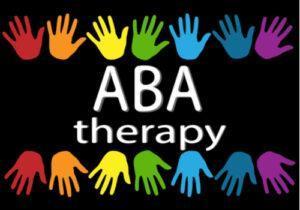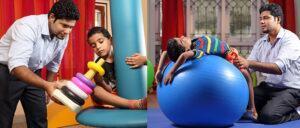Autism therapy can be done at home with the help of a few key resources. There are many different ways to provide therapy for autistic children, and many of these methods can be done in the comfort of your own home. You will need to have access to some special materials and/or equipment, but with a little bit of effort, you can provide quality autism therapy for your child.
Contents
What Is Autism Therapy?

Autism therapy is a form of treatment that is used to help autistic children. The goal of autism therapy is to help the child learn how to communicate and interact with others, as well as improve their cognitive and social skills. There are many different types of autism therapy, and many of them can be done at home with the help of a few key resources.
Common Autism Therapies That Can Be Done At Home
There are many different types of autism therapies, but some of the most common ones that can be done at home include:
ABA therapy
 Applied Behavioral Analysis (ABA) is a type of behavioral therapy that is often used to treat autism. It involves breaking down certain tasks and behaviors and working on them one step at a time. An ABA therapist will work with your child to make a behavior plan, and you can use this behavior plan to guide therapy at home. You’ll need to do some activities every day that help achieve the goals of the behavior plan, but kids usually enjoy doing therapy activities.
Applied Behavioral Analysis (ABA) is a type of behavioral therapy that is often used to treat autism. It involves breaking down certain tasks and behaviors and working on them one step at a time. An ABA therapist will work with your child to make a behavior plan, and you can use this behavior plan to guide therapy at home. You’ll need to do some activities every day that help achieve the goals of the behavior plan, but kids usually enjoy doing therapy activities.
Social skills training
Kids with autism often have trouble interacting with others, especially when it comes to playing and communicating like other children their age. Social skills training involves teaching appropriate social behaviors such as taking turns or playing nice. For example, you might role-play situations where your child practices what it’s like to be in different places and talk to different people (such as talking on the phone).
Stimming
Autistic children often engage in “stemming and,” which is a repetitive movement like hand flapping, rocking back forth, spinning around, or repeating phrases. Stimming helps kids release energy and communicate their needs and thoughts. You can work on stimming reduction by encouraging your child to draw pictures of their feelings rather than stim.
Benefits Of Providing Autism Therapy At Home

When you provide autism therapy at home there are many benefits for both you and your child.
- For parents, it can help to reduce stress and fatigue by having the support of other family members or friends. It can also help to find an online community that provides support.
- Parents can also establish a schedule. So that their child knows what to expect and when they will be able to have fun. Routines can also help with consistency throughout the day.
- When you provide autism therapy at home. It is very helpful to keep a schedule. So that your child knows what to expect and when they will be able to have fun. Make sure you plan ahead of time for activities that don’t always go as planned. Such as meltdowns, tantrums, distractions, etc.
- When you practice these skills often then your child will learn how to handle them better and it becomes less frustrating. It also helps if the tasks are short and simple. Because longer activities might become overwhelming for your child.
When you provide autism therapy at home, there are tons of autism therapy ideas available that can help! They might seem daunting when you first start out but if you pick one or two good activities to practice each week. Then it will make a big difference in helping your child reach their goals. If possible it’s also helpful to hire a babysitter every once in a while. So parents can go out without their children.
How Can You Provide Autism Therapy For Your Child At Home?
Getting started providing autism therapy for your child at home involves doing some preparation such as buying the materials you’ll need (see resource list) and finding resources that will provide support for you. If you have an older child with autism then they might be able to teach you how to do certain therapies activities. When your child was first diagnosed it’s likely that an autism therapist visited you in the home, and they usually leave a few resources with you. If you still have these resources then now is a great time to look them over and figure out how you can use them for therapy activities.
Observe Your Child
A helpful way to get started providing autism therapy for your child is by closely observing their behavior. Autism is a spectrum disorder, meaning that symptoms range from mild to severe, so there is no one typical autistic person. In general, though there are some common characteristics such as difficulty communicating or interacting with others, repetitive behaviors, difficulty focusing for long periods of time, and sensory sensitivities. You can watch what interests your child, what they do when they get excited, and how they respond to different activities. Observing your child will provide a lot of information about their needs and preferences.
Get ASD Themed Resources
You can find autism-themed resources in many different forms such as books, games, music, movies, etc. If you’re looking for autism therapy ideas then having a collection of resources is a great place to start! There are also some useful apps that you can use on your phone or tablet. The App Store has an ASD Community created by Autism Speaks which helps parents find apps recommended by other families. You’ll want to find resources that really capture your child’s interest so be sure to browse until you find something that appeals to them.
Find Resources On The Internet
Another way to find autism therapy ideas is by searching the web. A popular site for this is Autism Hub which has a great collection of tools and activities that can be used for therapy or at home. You might also search Pinterest for “autism activities” and get lots of activity inspiration!
Join A Support Group

You can join a support group on Facebook, online chat groups, or in-person if you live close to other parents with autistic children. These groups will give you valuable advice on how to care for and provide therapy for your child and some members might even be able to do some tasks with their child while you take some time away (such as going out to run errands etc.).
Use Technology
If you have a smartphone or tablet then there are lots of autism apps available that can help your child learn and practice different skills. You can choose from music, puzzles, games, etc. Of course, if you don’t have technology access then you’ll need to find other options for therapy materials.
Work With Your Child’s School
Your child’s school is another great source of support because they will likely know what therapy services your child needs and how often they should receive them. If your child receives these services through their school then be sure to ask the staff who provides the services which tasks work best for your child so you can do those activities at home too The American Academy of Pediatrics has some tips for working with your child’s school.
Find Supports For You
It can be very helpful to have the support of other family members or friends when you’re providing autism therapy. Parents often become fatigued and stressed from caring for a child who has difficulty communicating and interacting with others. So having supports will give you some time away to recharge. It can also help to find an online community that provides support. Because there might be someone in your area that you can meet up with occasionally as well. If possible it’s also helpful to hire a babysitter every once in a while. So you can go out without your child if they are young.
Establish A Schedule
When you provide autism therapy at home it’s very helpful to keep a schedule. So that your child knows what to expect and when they will be able to have fun. Make sure you plan ahead of time for activities that don’t always go as planned – such as meltdowns, tantrums, distractions, etc. When you practice these skills often then your child will learn how to handle them better. And it becomes less frustrating. It also helps if the tasks are short and simple. Because longer activities might become overwhelming for your child.
Create A Routine
Having a routine is an important factor in autism therapy at home because it provides consistency throughout the day. Your child needs rest after all of those new learning experiences! Routines can include having lunch or dinner together, taking a bath or shower, watching a favorite show. You can also create routines for your child’s daily activities by always starting with the same task each day, or having shorter/longer periods of time before following up with another activity.
Research Autism Therapy Ideas
There are tons of autism therapy ideas available to try at home! They might seem daunting when you first start out but if you pick one or two good activities to practice each week then it will make a big difference in helping your child reach their goals. For example, when I worked at an ASD center we used the app Proloquo2Go to help children communicate verbally using pictures & symbols on their iPad. This app is great because there are lots of different categories that kids can use to communicate all sorts of different things. If you want to learn about other autism therapy activities then check out this list of 101 ideas.
Encourage Communication
At first, it might seem like your child isn’t listening or doesn’t understand what you’re saying, but if you keep encouraging communication then they’ll get the hang of it eventually! And don’t forget that no two children will develop language at the same pace so there’s no need to compare your child’s progress with another. Just focus on using age-appropriate language and have fun practicing!
What Materials And Equipment Will You Need To Provide Therapy At Home?

To provide autism therapy at home, you will need some basic materials and equipment.
One of the most important things you will need is a space for your child to learn and relax. This can be a room in your house or even an outdoor space like a backyard or park. It’s important that this space is quiet and free from distractions so your child can focus on their therapy activities.
You will also need materials for the activities you choose to do. This could be anything from flashcards and picture books to arts and crafts supplies. Make sure you have a variety of materials available so your child can explore different interests and skills.
Another essential piece of equipment is a communication device like an iPad or laptop with an AAC app. This will help your child to communicate which can improve many aspects of life including social skills and understanding.
When you provide autism therapy at home. It is very helpful to keep a schedule so that your child knows what to expect and when they will be able to have fun. Make sure you plan ahead of time for activities that don’t always go as planned. Such as meltdowns, tantrums, distractions, etc. It’s also beneficial to plan for success by choosing autism therapy activities that are easy for your child. But still challenging enough where they’re learning new things each time they do the activity again.
Conclusion
There are many therapies to help children with autism, but there is no one-size-fits-all. The best therapy for your child may vary depending on his or her needs and the severity of the condition. If you would like more information about how we can provide autism therapy at home in a way that meets your family’s unique needs, please give us a call today! We offer free consultations so that you can get started right away without any risk.
If you are looking for affordable Online Counseling MantraCare can help: Book a trial therapy session


